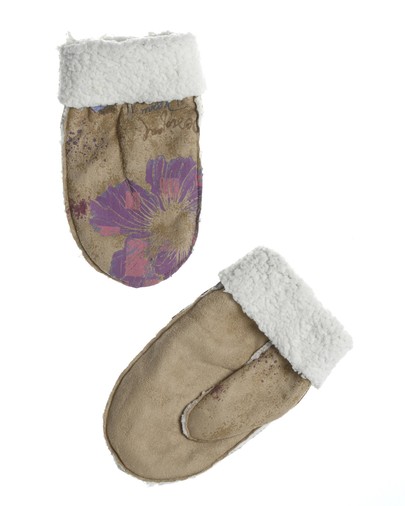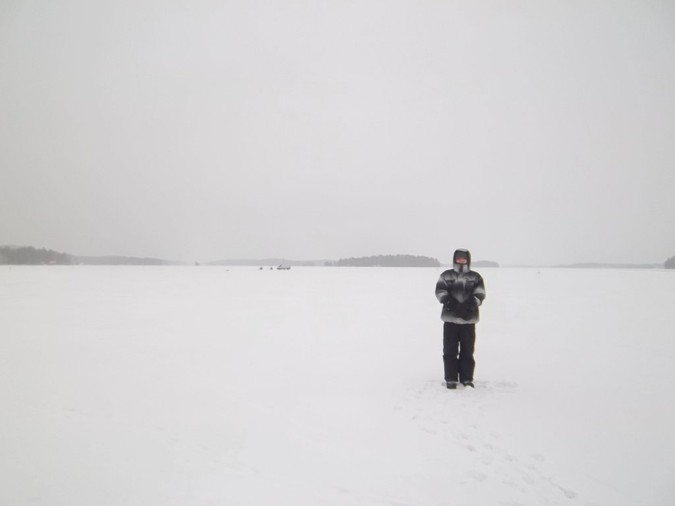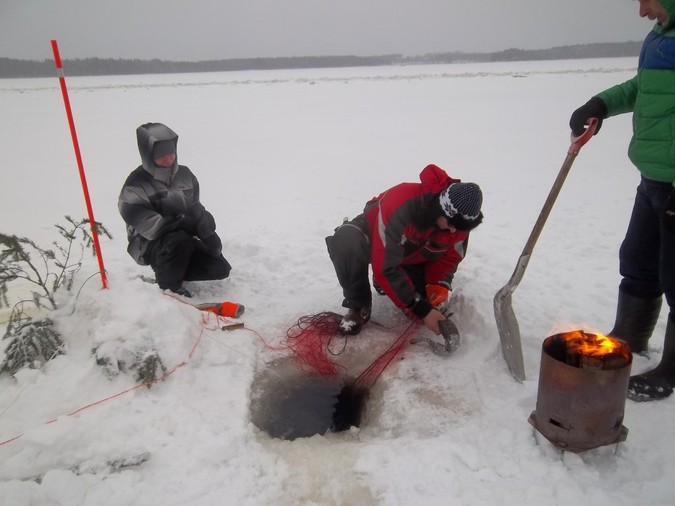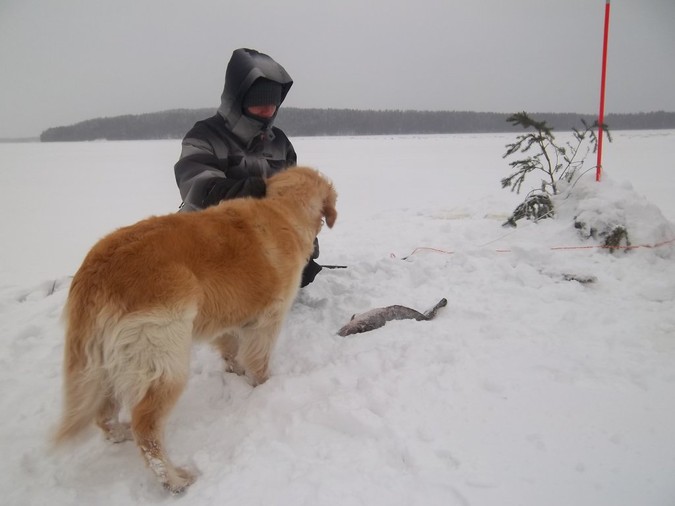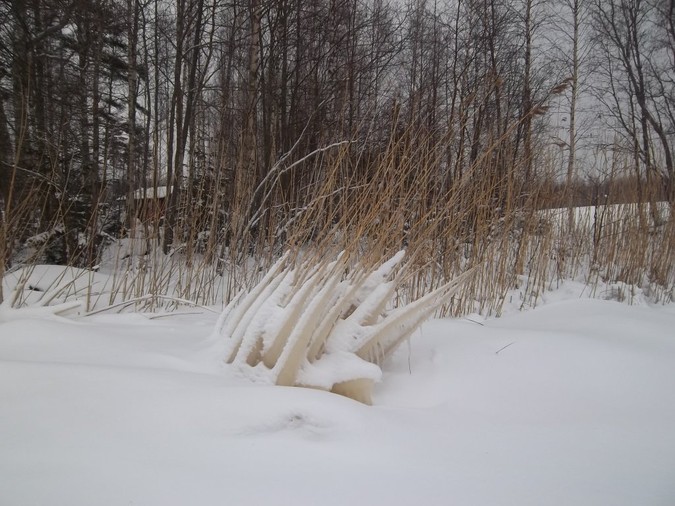Welcome back everybody! I hope you all had a happy New Year's Recovery. I am now back in Jyväskylä and have found some time to recount an adventure I had a few weeks ago.
Remember when I mentioned filleted fish two posts ago? Well, when I was visiting Kaisa's parents in Timola, I learned exactly how said fish were acquired. But first, a prelude.
Last Christmas, I received a Finnish Survival Kit from Kaisa's family. It consisted of a large can of beer, three small bottles of liquor, a hunting knife, an ice-fishing rod and a pair of what I dubbed "miserable ice-fisherman's gloves". I called them that because they brought to mind an image of a cold-looking person perched in a camp chair staring sleepily at a hole in the ice with those gloves on their hands. They looked a little like this:
Brr.🔗
Don't mind the floral print. That was the best picture I could find on short notice. I assure that mine were much manlier, if less stylish.
I was able to learn just how miserable said ice-fisherman would be under normal circumstances. I joined Kaisa, her father and her neighbor (and her neighbor's dog Iita) as they went to retrieve whatever their nets had caught in the past several days under the ice. Now, I'd like to ask you to keep in mind that what I'm about to describe could be accurately called the easier method of ice-fishing. The "hard" method involves setting up a camp chair and perching over a hole in the ice for hours and dangling a lure into the water. Nevertheless, this method required a small car trunk full of gear to retrieve fish from a pair of nets. The list of gear included, but was not limited to: a heavy iron spear-like device to jab holes in the ice, a small tin can on legs and enough firewood to keep it burning for about twenty minutes, lighter fluid to light said fire, a big garbage bag to carry the catch, a roll of twine to pull the net back under the ice once the fish have been removed from it, a variant on the piikki I mentioned in the other fish post and a dog. The dog, while optional, is highly recommended because dogs are awesome.
So once everything has been loaded and transported, you arrive at the lake.
If you look closely, you can see a van parked on the ice in the background. Some people take their ice fishing seriously. That or they wanted easy access to a heater.🔗
Three things comes to mind the first time you see a lake completely frozen over, in roughly the following order: "Wow, will that really hold my weight?", followed by "Wow, it is really flat out here!" followed shortly by "Oh my god, that means no windbreak and now my fingers are useless, icy sausages." It is cold. When we went out onto the ice, it was -15c (5f) and the windchill made it feel like -100. I was just wearing woolen mittens because they'd served me well so far, but those weren't nearly enough for my poor Californian digits. Luckily, someone had forseen this eventuality, and included in the kit of things was a pair of thick mitten "shells" that go down to the wrist and slide over other sets of gloves to windproof them. The downside is that they reduce your capability to manipulate things to that of a particularly nearsighted crab's. I struggled to adjust my zipper, or my hat, or just abut anything really, but at least I could feel my fingers.
The holes in the ice are marked with highly visible orange poles, and small evergreen branches. They're created in pairs, and the net is strung under the ice from one hole to the other, and then hangs down like a curtain, ensnaring any fish that swim into it. The procedure for retrieving the fish is as follows:
First, find a hole. It's covered by a piece of thick styrofoam which prevents the hole from completely refreezing. A pair of long branches secure one end of the net. The branches are removed, and the net is untied from the branch, but not allowed to slip into the water. At some point, the heavy iron spear-thing is used to break through the ice. Check for frostbite.
Second, move to the other hole. Place tin can on the ice, fill with firewood and light. Then, repeat the process from the first hole. Then, reel in the net, inch by cold, wet inch. If there are any fish, rejoice, spoils are yours. Check for frostbite.
Pictured: rejoicing.🔗
Note that in that picture above, Raimo's (Kaisa's neighbor) hands are bare. He's reaching into the water to better handle the fish and the net. I have no idea how they weren't literally frozen solid. I watched some of drops of water on the net freeze before they had a chance to fall. Finns are hardcore, man.
Third, run the net back under the ice, then cover up both holes. Throw the fish into the garbage bag (or whatever you have, I suppose. We had a garbage bag). Scatter the ashes from the can-fire and cool it with freezing lakewater. Return home with a bounty of fresh fish ready for cooking. Check again for frostbite, just to be sure.
The blind lead the blind as I teach Itta the finer points of fishing.🔗
During the expedition I took part in, we caught three fish with two nets and successfully avoided frostbite. We returned home and were rewarded for braving the freezing wilds* by having fresh fish for lunch.
Pictured: serious frostbite.🔗
We saw the above phenomenon on our way back to the car, and Kaisa thought it'd make a pretty cool picture. I agreed, and now you can enjoy the ain't-it-cool factor as well. Also, credit for all photos goes to Kaisa. I was too scared to take my fingers out of my lobster-claws to manipulate the camera.
_____________________
*Not actually the wilds.
